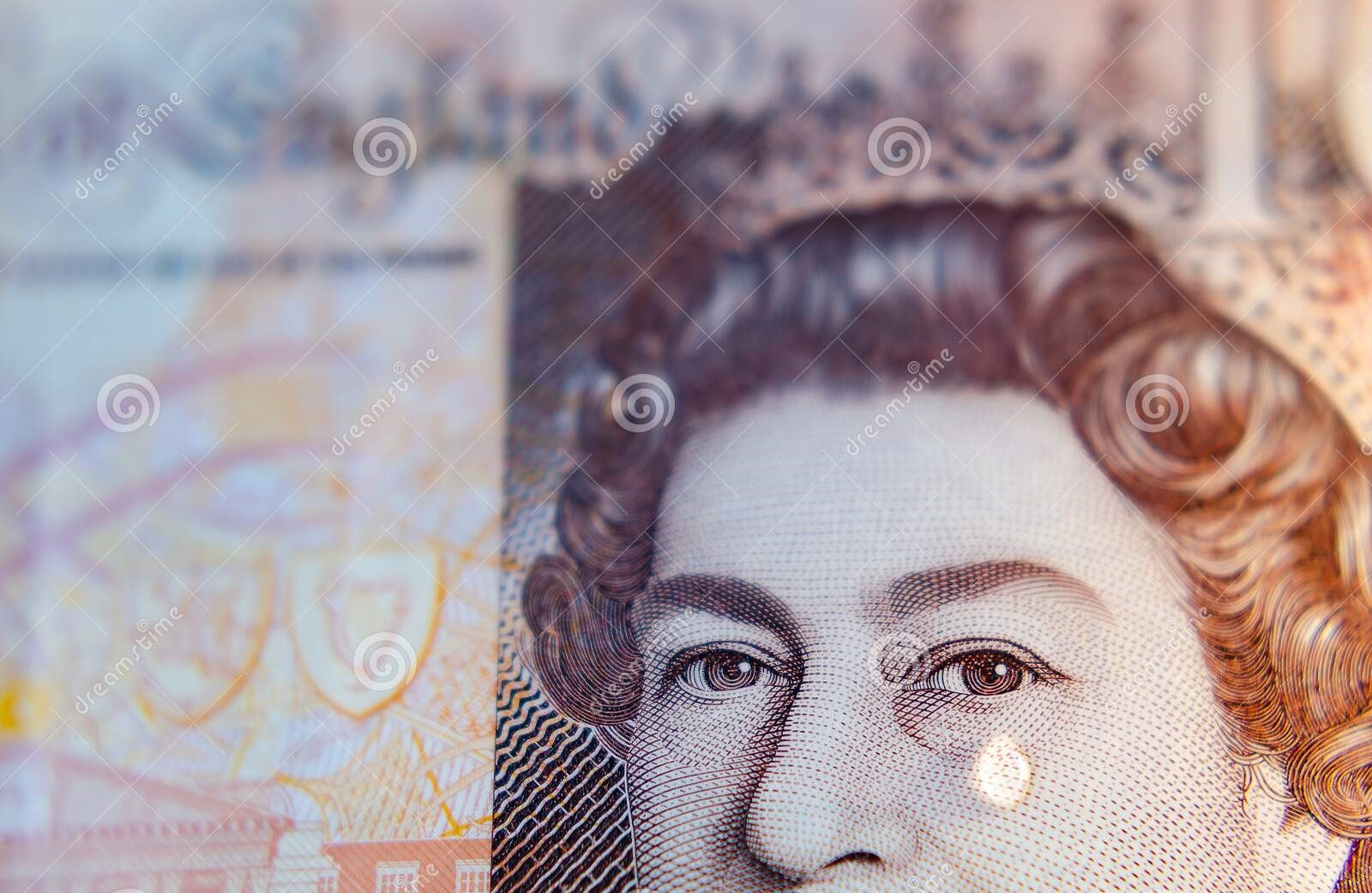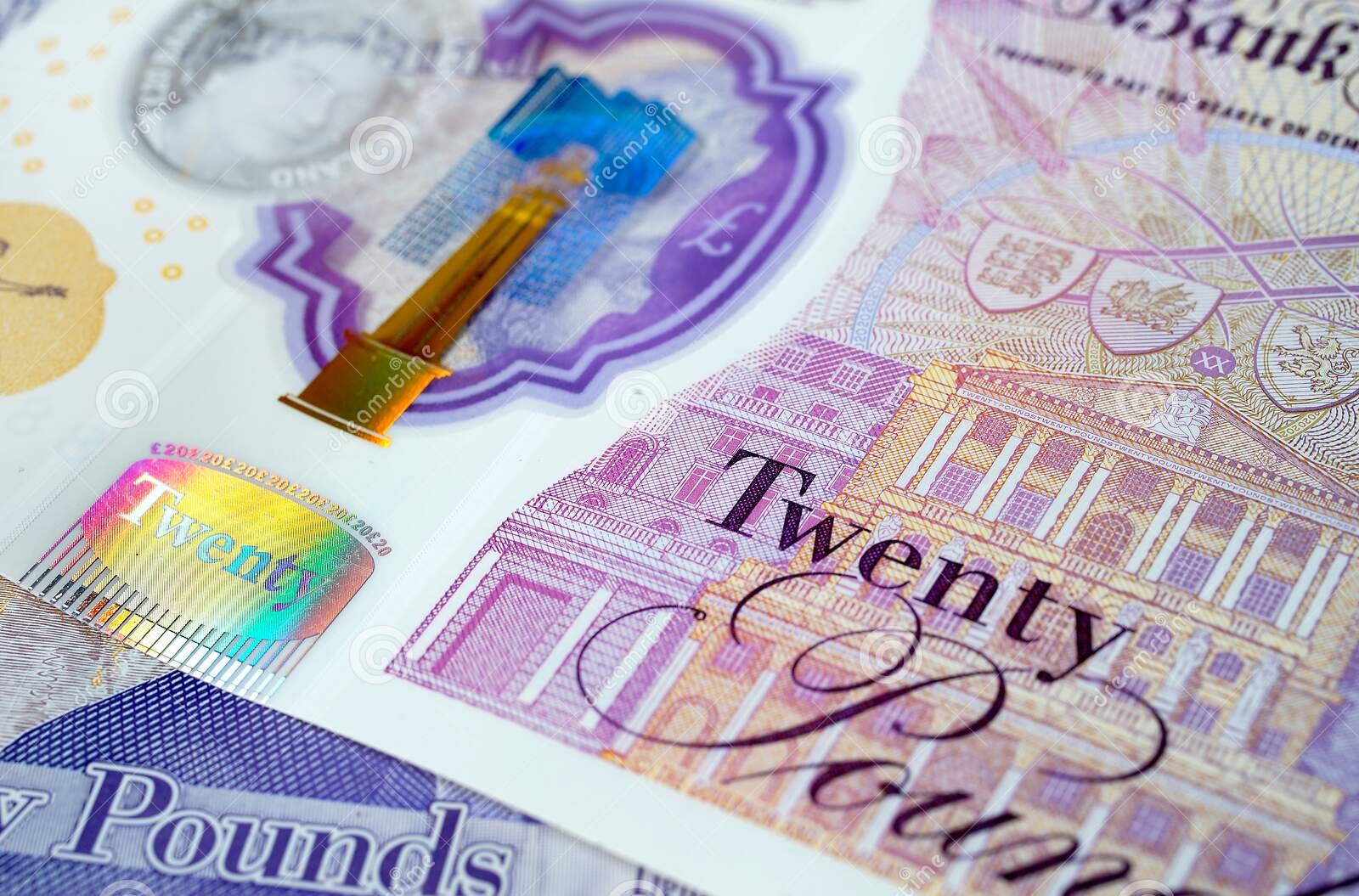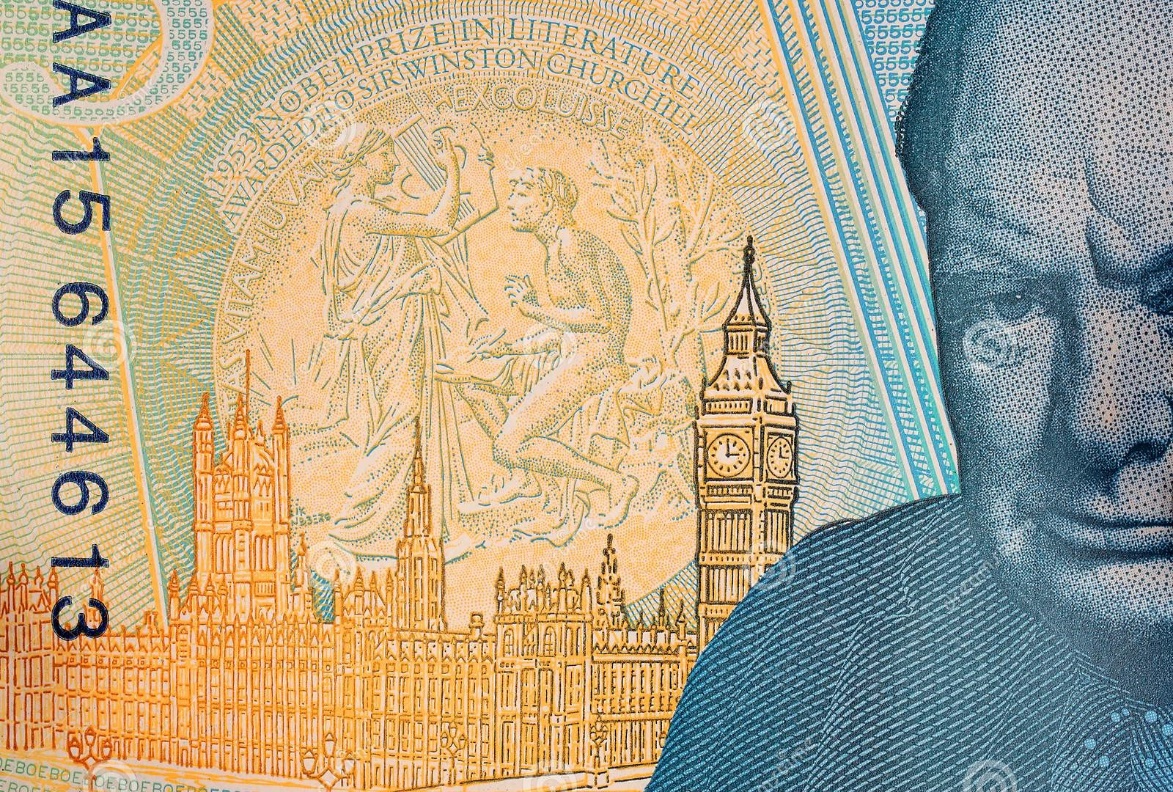The Bank of England, responsible for the UK’s currency, has been trying to keep up with technological changes. They have developed several security measures that prevent counterfeiters from making fake versions of their money and passing them off as real ones. The Bank of England uses sophisticated technology to make the money bills unique and prevent counterfeiting. The high-tech features of their banknotes include hidden threads, watermarks, micro printing and holograms.
Security Thread

Source: https://www.dreamstime.com/stock-photo-bank-england-money-lot-pounds-image56410896
The Bank of England has recently introduced a security thread on its notes. This is a feature that allows you to verify the authenticity of your money by looking at it from the side and seeing if there are any holes or creases in it.
The security thread can be seen with a magnifying glass, but this may not be enough to let you know if someone has copied your note by using an x-ray machine or other technology to see into it.
Watermark

Watermarking is a way of making the banknotes more difficult to counterfeit. It’s also known as “hidden printing,” or “intaglio printing.”
The watermark appears when you hold up the banknote under light, and it can only be seen when held at an angle. There are several types of watermarks:
- A portrait (or head), which often shows an image of Queen Elizabeth II on British banknotes
- The instrument of authentication (I O A), which appears on some older notes
Micro printing
Micro printing is a process that prints small, faint text on bank notes. The goal of micro printing is to make it more difficult for counterfeiters to replicate the design of real currency.
The Bank of England uses this technology in its paper money design to prevent counterfeiting, as well as for other purposes such as detecting counterfeit notes after they have been printed. This type of printing involves applying multiple layers of ink with fine lines between them and then using heat-sensitive ink or laser engraving to create patterns that cannot be reproduced by fake presses without leaving some sort of “signature” behind on each note you print with it (the signature being the pattern created by your machine).
Foil

Source: https://www.dreamstime.com/detail-new-uk-twenty-pound-note-image178592316
Foil is a security feature that is visible when the note is held up to the light. It can be seen as a thin layer of metal applied to the note, usually silver or gold.
Foil was first used in England in 1753, when it was invented by Thomas Simonetti, who was then employed at the Bank of England. The Bank of England has continued using foil ever since—and this may be why it’s so difficult for counterfeiters to copy their notes!
Hologram
The Bank of England has a hologram on its banknotes that can be seen through the transparent window in the front. This security feature helps to prevent counterfeiting, as it’s hard to duplicate a hologram without access to the original file.
The first step in creating this effect is taking an ordinary bill and printing it onto paper or plastic with special ink (this is called “laser imaging”). Then, you take this image and scan it into your computer where you can manipulate it using design software such as Illustrator or Photoshop. You may also opt for 3D printing technology instead of traditional 2D methods if you have access to one!
Fluorescent Fibres

The Bank of England uses fluorescent fibres to prevent counterfeiting. Fluorescent fibres are made of plastic and embedded in the paper, which makes the paper glow in ultraviolet light. The Bank has been using this technique since 2012, when it started using it with its own notes and coins. Because these instruments are not directly visible by the naked eye, they can’t be used by counterfeiters to copy notes or coins.
Serial Number
A unique serial number on each note, which can be used for identification and tracking purposes. The serial number also acts as a deterrent against fraud as it prevents people from changing the notes without getting caught by the bank or police authorities.
Conclusion
England has a very advanced and robust currency system that is resistant to counterfeiting. The Bank of England uses technology in many different ways to protect against this crime. This includes security threads, holographic imaging, foil stamping and watermarking which are all designed to prevent the production of fake banknotes.
You Might Also Like: 5 most important British Innovations and Discoveries of all time, History of the Mobile Phones in the UK and Ireland

Muhammad Asfandyar is a lawyer having extensive experience in creative content writing, proofreading, legal and academic research writing. He can be reached at asfandyar.edw@gmail.com

